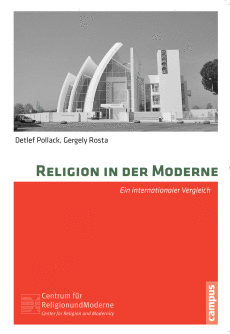Religion and Modernity: an International Comparison

This is not a book that provides a new integrated theory of religious change in modern societies, but one which develops some theoretical elements suited to make some of the contemporary religious alterations understood. Most of the approaches in sociology of religion are prone to emphasize either processes of religious decline or of religious upswing. The secularization theory, for example, might include a couple of relevant factors such as functional differentiation, economic affluence or social equality in order to account for religious change. But the result of its empirical analyses seems to be certain in advance, namely that the social relevance of religion is decreasing. In contrast, the model of the religious market devised by sociologists of religion in the U.S. is inclined to detect processes of religious upsurge everywhere. This book tries to avoid a purely theoretically guided perspective on the phenomena. That’s why it does not start with theoretical propositions but with questions which of course are theoretically framed. The book raises the question of how the social significance of religion in its various facets has changed in modern societies and wants to explain which factors and conditions have contributed to these changes. In order to answer these questions, it carries out several case studies (including those from Western and Eastern Europe, South Korea, US) which constitute the bulk of the text. Only after having done the empirical case studies does it offer some generalizing theoretical conclusions relying on the insights gained in the empirical studies and proposing determining factors and overarching patterns lying behind the religious changes in modern societies. To this extent, the book does not come up with an all-encompassing coherent model like secularization theory or the market model but with an empirically based multi-paradigmatic perspective.
It combines empirical analysis and theoretical considerations. Its character is both descriptive and explanatory. It does not only comprise case studies, but also international comparisons. It mainly uses representative population surveys like the World Value Survey, the International Social Survey Program or the Religion Monitor as well as surveys conducted by the authors themselves. At the same time it integrates historical analyses going back to the 19th century.
Note: Pollack, Detlef, and Gergely Rosta, Religion in der Moderne. Ein internationaler Vergleich (Religion und Moderne, vol. 1), Frankfurt am Main et al.: Campus 2015.
English edition: Religion and Modernity. Oxford: Oxford University Press (accepted, forthcoming in 2017).

